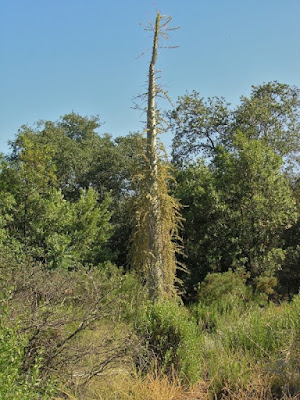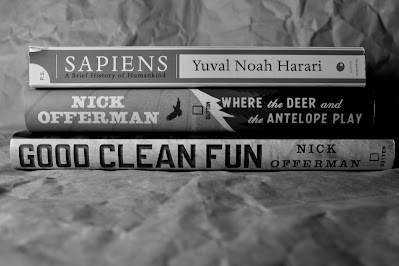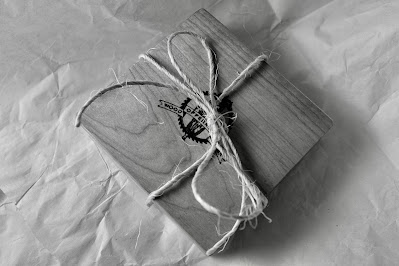Garden Gimlet
 |
| Garden Gimlet: photo by Cliff Hutson |
 |
| Garden Gimlet: photo by Cliff Hutson |
 |
| Union Station: photo by Cliff Hutson |
It is clear that COVID-19, and its variants, has disrupted travel plans for two and a half years. Many of us are reluctant to travel at all. Those who do are subject to a lot of rules and regulations.
Is the omicron variant making you rethink your holiday plans?
I am one of those staying at home. But, that does not stop my mind from from wandering and Tim Cahill's rules for traveling come to mind. Cahill is, for my money, one of the best of the travel/adventure writers of all time. Years ago, he came up with a list of rules to follow when traveling that I have enjoyed returning to time and again. So, at the risk of copyright violation, I am going to include his list (with my annotations) in this blog.
 |
| The Green Book: photo by Cliff Hutson |
Rule 1: Avoid psychotic travel companions. Here's the nightmare: It's two in the morning. You are sitting around the campfire speaking slowly, with exaggerated calm, enunciating each word very, very carefully. You are saying, "Give me the gun, Laszlo. Give me the gun, Laszlo. Give me the gun, Laszlo."
Rule 1, corollary 1: The most carefully chosen travel companions become the most psychotic.
Rule 1, corollary 2: Psychosis is contagious.
Rule 2: Have a quest. The quest is the most significant and consequential of all travel plans. What you really want to do is meet indigenous folks, understand their concerns, find out how things work, make friends. You don't do this in the company of traveling English-speakers. So have a quest, some bit of business that will shove you into the cultural maelstrom. Perhaps you have distant relatives in the country. Look them up. That's your quest. It will force you to use the phone book (people in Iceland, you'll note, are listed by their first rather than last names) and to arrange transportation to an area of the country that is not likely a tourist destination. Perhaps you're interested in trains, or motorcycle clubs, or ecological issues. Find locals who share your passion. You'll make friends.
Rule 3: Exercise ordinary caution. Never, never, never put a marshmallow in your mouth and try to feed it to a bear.
Rule 4: You are the protagonist. There is a variety of travel book currently in vogue. The writer, a man or woman broken by a bad relationship, sets off on a journey designed to heal the soul. By the end of the book, the formerly tortured scribe is figuratively knocking back margaritas in an orgy of cleansing regeneration.
Used to be, we sent mythical or fictional characters on such journeys. Gilgamesh searching for the answer to death; Odysseus on a ten-year voyage of discovery; Dante and Orpheus in hell; Huck Finn on the Mississippi. These days, we tend to be more democratic in our mythology. You get to be the driving force. Make your myth a good one.
Rule 5: Boredom greases the cogs in the machinery of marvels. In The Immense Journey, the anthropologist and naturalist Loren Eiseley says, "It is a commonplace of all religious thought, even the most primitive, that the man seeking visions and insight must go apart from his fellows and live for a time in the wilderness. If he is of the proper sort, he will return with a message. It may not be a message from the god he set out to seek, but even if he has failed in that particular, he will have had a vision or seen a marvel, and these are always worth listening to and thinking about."
What Eiseley doesn't say is that, on your quest for marvels and insights, you will be bored. Oh, God, will you be bored. The three days waiting for an Indonesian bureaucrat to issue you a travel permit; the rock slide in Costa Rica that caused a 23-hour traffic jam; the five-day wait for the Congo River passenger barge; the eight sweaty hours spent in the transit lounge of the Bujumbura airport, waiting for crews to clean up the wreckage of the last plane that tried to land in Kigali. Boring.
Bring along a big book. This is your chance to finally finish War and Peace. And remember--while you're plowing through Andrey's interminable conversations with Karatayev–that boredom is often the price we pay for marvels.
Rule 6: Stop whining. If you're cold and wet, it's a good bet that everyone else in your party is too. Why should they listen to you talk about what they already know? Travel is boring enough as it is.
Rule 6, corollary 1: This can't be stressed strongly enough: No one wants to hear about your last bowel movement.
Rule 7: Read guidebooks. Guidebooks, books on the country, and books by local authors can all help you refine the nature of your quest.
Rule 7, corollary 1: Expect the books to be wrong or out of date.
Rule 8: It ain't about money. There are guidebooks for backpackers and budget travelers that say that in most Third World countries, there's a three-tiered price system. The first price is for stupid rich outsiders. The second is for citizens who are not local. And the third is for locals. Strive, the books tell you, for the third price. This, they say, will increase your interpersonal skills and tell you much about the country.
OK, true enough. There are places where you are expected to bargain and sharpies who want to take advantage of you. Unfortunately, too many people who think of themselves as "world travelers" become obsessed with money. It's loathsome to see some young trekker arguing for an hour with an elderly woman over a 15-cent charge for an afternoon of washing clothes.
Too often money, and the process of saving money, becomes the entire point of traveling. If the nature of your quest is financial, stay home and get into arbitrage.
Rule 8, corollary 1: Similarly, don't listen to fellow travelers who espouse this philosophy. "Don't spoil the natives," is the way it is often put. Screw these people. Spend what you need to in order to accomplish your quest.
Rule 8, corollary 2: Thinking of your hosts as "natives" who can be "spoiled" dehumanizes people and creates the kind of abyss that is impossible to bridge with friendship.
Rule 9: Don't worry too much about gear. Unless you're going to climb a mountain or scuba dive on your own, bringing too much of your own equipment can be a problem. Do people live where you're going? Have they lived there for centuries? For a millennium? Maybe they know something about survival in the place where they live. Why spend three days trying to find a machete in Denver when you can buy a better one for a quarter of the price in Honduras?
My own kit is fairly standard: Diarrhea medicine, a dry pad to sit on, hot sauce for bland meals, dental floss to use as sewing thread, a Leatherman tool, something to read, and duct tape, which the Bambenjele pygmies of the northern Congo told me represents the high point of my culture.
Rule 10: Don't follow rules. This is probably the most important rule.
Rule 11: Try the local foods. Eat what is put in front of you. They are not making fun of you. The rooster's head floating in the soup really is given to the honored guest. It is impolite not to eat it. If you're a picky eater, stay home.
Rule 11, corollary 1: Take the usual precautions, but expect to get sick anyway.
Rule 11, corollary 2: See Rule 6, corollary 1.
Rule 12: Learn the rudiments of the local language. It's important to be able to say, "I'm sorry, excuse me, I didn't know, I'm not from around here, where's the bathroom, thank you, how much is a beer, I beg your pardon, I'll pay for it, call a doctor, call the police, don't call the police."
Rule 12, corollary 1: Intimate relations fuel idiomatic fluency. The colonial Dutch had a saying that holds true to this day: "The best way to learn a language is under the mosquito net."
Rule 13: You are the foreigner, dickweed. Once, in Costa Rica, I saw an older gentleman in Bermuda shorts and black shoes upbraid a waiter who didn't understand the word "ticket," as used to mean "bill."
"Gimme my ticket."
"Your ticket, sir?"
"Yeah, my ticket. What's wrong with you?"
"I don't understand this word, 'ticket.'"
"How old are you?" this American asked.
"I have 29 years, sir."
"Well, goddamn it," the man said, "you're old enough to know English by now."
This is why people burn flags.
Rule 14: The "natives" have their pride. One thing an American traveler hears quite often is, "You Americans have a great nation, and much power, but we (Peruvians, Mongolians, Egyptians, Congolese, Bolivians, Turks) have the great soul." Don't argue with these folks, Miles Davis and Smokey Robinson notwithstanding. Instead, inquire about the nature of the national soul. You could learn something.
Rule 15: Schedule a rest day every now and then. Contrary to what you read, sudden insights seldom happen at the summit of a mountain, at the moment the whale is sighted, or in the face of some overwhelming bit of landscape. You haven't yet assimilated the experience. Look for epiphanies on those days when you're lying on your back, watching the ceiling fan push dust motes through a shaft of light falling through a grimy window. Exhaustion seldom engenders insight.
Rule 16: Don't drink too much in a little basement bar just off a street called Florida in Buenos Aires... Because you'll find yourself involuntarily surrounded by coperas, or what we would call B-girls, and three bartenders will all be opening bottles of "champagne" that you didn't order and that cost $60 apiece, and you'll have to fight your way up the stairs to the exit, throwing money at the bouncers, and the coperas will run out into the street and yell maricón at you as you stagger away, thinking, "Geez, I thought they liked me."
Rule 17: Don't become involved with your guide. This is often a cause of heartbreak. Worse, there are situations in which the affair works out. Then you end up married to a guide.
Rule 18: Wait until the last possible moment to punch out disagreeable traveling companions. It's best not to punch out traveling companions during the first two-thirds of a trip. The person may possess skills that could come in handy. It's best to swallow insults, listen to complaints, and nod sympathetically at the vivid description of the last bowel movement. Then, at the moment of greatest annoyance, simply recall your resolve to deck this bozo with a sucker punch. Don't do it, just think about it. In practice, you'll find the idea of a physical comeuppance soothing. And by the end of the trip, you may even find you've developed a grudging respect for the person. You may actually have become friends. But let's say it's time for the last good-bye, and you still think the person would benefit from a physical explanation of his various failings. Don't throw that punch. Think instead about how happy you're going to be when you've seen the last of this slime weasel. The punch is a psychological device, a coping mechanism, and it lives only in your mind.
Rule 19: Mold experience into stories as a mnemonic device. Travel is a chaos of experience, momentarily memorable and distressing in its capacity to flee the mind and disappear without a trace. Guides, professional travelers, mold the clay of experience into stories. All guides believe their stories are unforgettable. Some of them are.
Here's a typical guide story: Two guides, whom we'll call Big Mike and Medium Mike, are in the midst of a long, boring wait in Punta Arenas, Chile. They're waiting for a freighter that will take them to Antarctica. Medium Mike is telling the story. "So the freighter is being loaded and may leave at any time. One of us has to wait for the departure call. We draw straws. I get to wait. It's Saturday night. Big Mike goes to the local house of ill repute. He's there all night. Seven o'clock the next morning I get the call. Boat's leaving in two hours. I run down to the place where Big Mike is, but the door is locked. No one answers my knock. I'm getting frantic. The windows are high off the sidewalk, so I'm on a cement block, pounding on a window, yelling for them to open up, c'mon, this is important. About this time, a group of nuns walk by on their way to mass. One of them stops and says, 'Son, couldn't you wait until after church?'"
Rule 19, corollary 1: You don't have to be a guide to tell guide stories.
Rule 19, corollary 2: All guide stories begin, "No shit, there I was..."
Rule 19, corollary 3: The worse the experience, the better the story. Therefore...
Rule 20: There are no bad experiences.
 |
| Traveling Shoes: photo by Cliff Hutson |
Note:
This article is posted on this site is for promotional purposes only. If Mr. Cahill, Outside Magazine, or affiliates want this taken down, please contact me and I'll be happy to do so as quickly as possible.
 |
| Boojum Tree: photo by Cliff Hutson |
 |
| Fouquieria columnaris: photo by Cliff Hutson |
 |
| November 2021 Books: photo by Cliff Hutson |
 |
| OWS Whiskey Coasters: photo by Cliff Hutson |